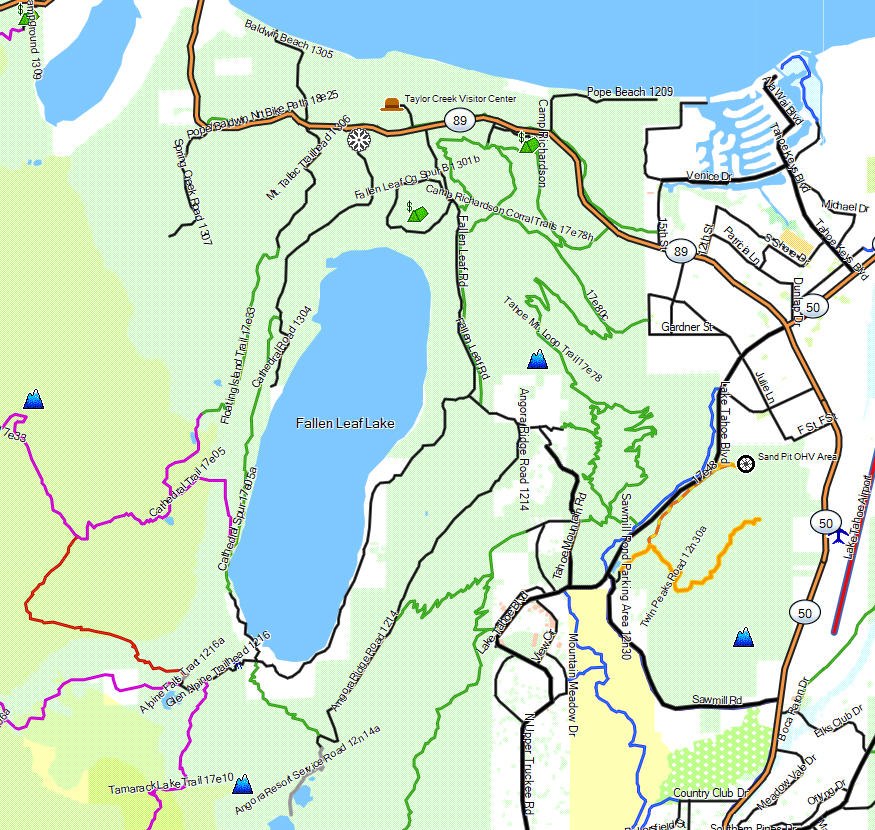

The reason for this is that Emerald Bay lacks the same depth of the main lake – its surface area/volume ratio is high enough to lose its accumulated heat and reach the required 39☏ top to bottom during particularly cold winters. In order for Lake Tahoe to freeze over, climatic conditions would have to become much colder, or the lake would have to fill in and decrease its depth enough to achieve a sufficiently high surface area/volume ratio.ĭavid also points out that Emerald Bay has formed complete ice cover at least three times during the 20 th Century and partial cover in more years. It is, ironically, a lack of movement that prevents Lake Tahoe from freezing. Since the upper layers of water never cool below this temperature, they never sink below this depth and allow further cooling to take place. However, the summer warming penetrates only to a depth of about 375 ft – where the temperature has remained at 41☏. By early May, surface temperatures reach 50☏, and they peak at 65☏ to a depth of 15 ft by mid-August. Before the surface of the lake has a chance to cool further, increasing sunlight and air temperatures start raising the temperature at the surface. The lake is coldest in late March with a temperature of 41☏ at the surface and gradually decreasing to 39☏ at a depth of 500-600 ft and below. The result of all this is that the surface temperature of Lake Tahoe never reaches 39☏.

The relatively mild climate that occurs in the Tahoe Basin, due to its proximity to the warm Pacific Ocean, further limits the rate at which stored heat is transferred to the air above it. This limits the rate at which stored heat is lost from the lake during the colder winter months. Lake Tahoe has a very small surface area/volume ratio due to its great depth but relatively small circumference. These three principles combine to explain why Lake Tahoe does not freeze over. Freshwater bodies in colder climates will lose heat more quickly than those with the same surface area and volume in a milder climate. The rate at which heat is lost is also affected by climate.The rate at which stored heat is lost during winter depends upon the surface area/volume ratio – lakes with a higher ratio (i.e., they have a large surface area compared to their volume) lose heat quickly, while those with a smaller ratio (small surface area compared to their volume) lose it more slowly. Freshwater bodies gain heat during summer when air temperatures exceed the temperature of the water at the surface and lose it during winter when air temperatures are below the water surface temperature.This process continues until the water at all depths is a uniform 39☏, after which the surface waters can continue cooling down to 32☏ and begin freezing. For any lake to freeze, its surface waters must cool to 39☏, at which time they become denser than the underlying waters and sink beneath them. Freshwater has the unique property of reaching its maximum density at about 39☏ – that is, water is densest at a temperature 7☏ above the temperature at which it freezes.The real reason results from a combination of three basic scientific principles: Nor is it the motion of the water – the Bering Sea is rocked all winter long by violent storms but still forms thick ice cover.
FALLEN LEAF LAKE WATER TEMPERATURE UPDATE
David is currently updating his website to include a more detailed explanation about this, but he sent me a draft of his update and has graciously given me permission to quote from it in order to help clear up some of the confusion.Īs David points out, size is not the reason – Lake Baikal has more than three times the depth of Lake Tahoe and 160 times the volume, yet is freezes over to a thickness sufficient to support a railway. Forest Service, Lake Tahoe Basin Management Unit FAQ website) is, in fact, wrong. David pointed out that this widely circulated explanation for why Lake Tahoe doesn’t freeze (repeated even by the U.S.D.A.

Antonucci, an environmental and civil engineer and author of the website. Sounded good to me.įortunately, my post drew the attention of David C. That last fact was linked to one of the many internet sources explaining that Lake Tahoe’s massive size and the fact that its waters are always in motion prevent it from freezing. At the end of that post, I listed some interesting facts about Lake Tahoe, including the fact that Lake Tahoe does not freeze over. In my recent post, Born of glaciers, I touched on the formation of Lake Tahoe and discussed the glacial origins of Emerald Bay and nearby Fallen Leaf and Donner Lakes.


 0 kommentar(er)
0 kommentar(er)
